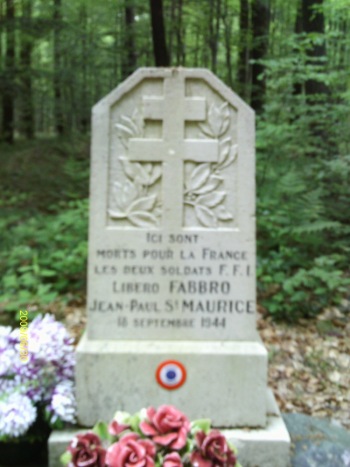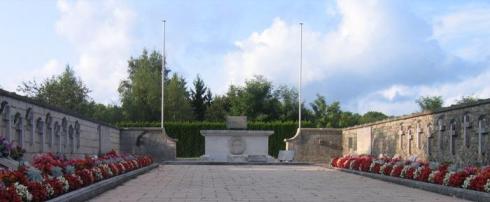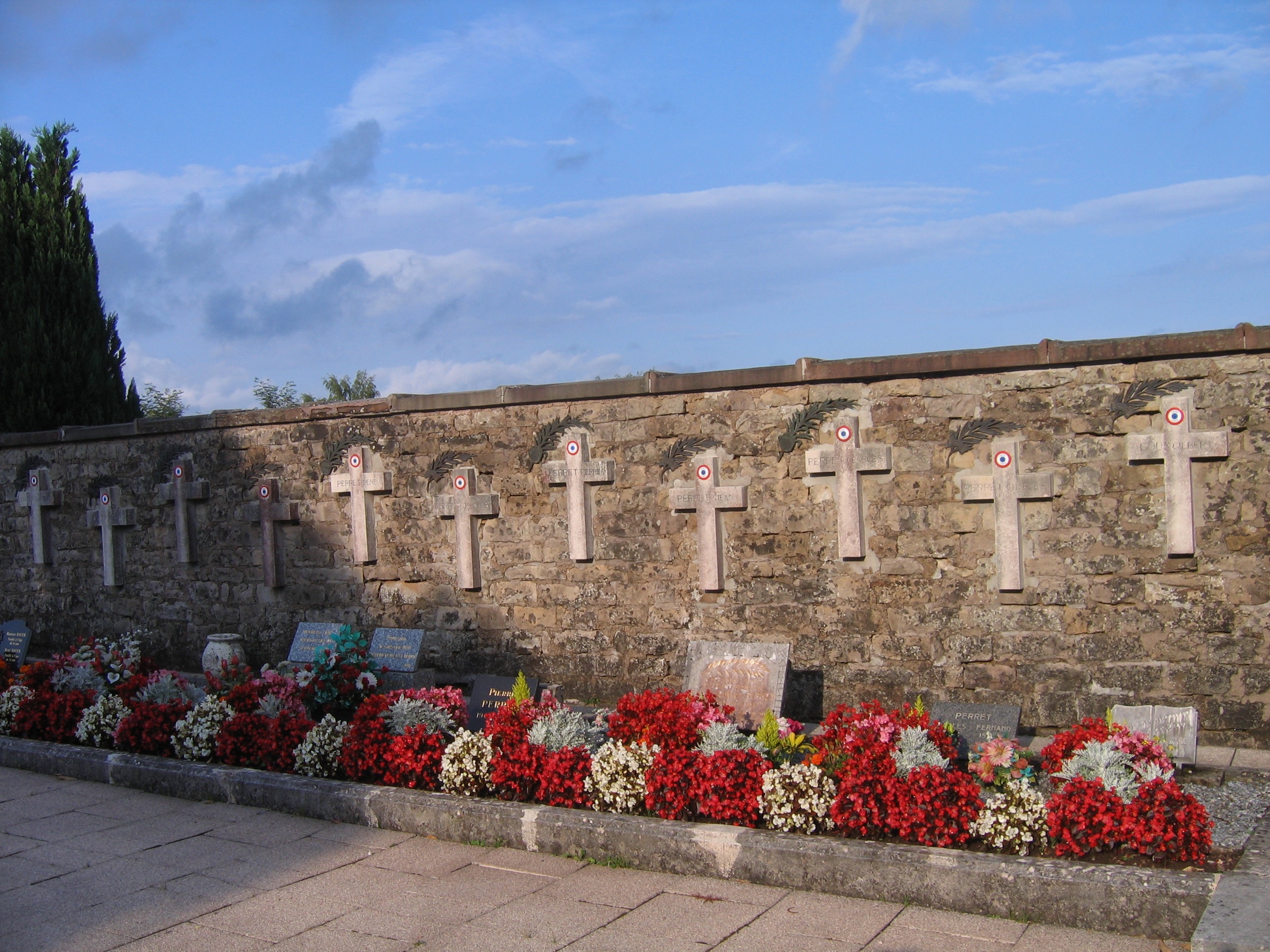Monday, September 18
Jules Perret writes:
"What a night! All night long, trucks rolled by, coming from Chenebier, going towards Belverne. Are they bringing troops from Alsace? All day, they keep coming. Several trucks are pulling big cannons. And horse-drawn wagons, too. They stable their horses everywhere. We have four, Jacques three. The men are polite enough and don’t take anything without asking. We don’t recognize ourselves in this confusion. Are we French? Collaborators? A soldier from Wurtemburg told us he had come up from Perpignan, that they were on the march for four weeks, fighting Americans and “terrorists.”
 The stone that marks the death of two maquis on September 18, 1944, located in the woods between Etobon and Clairegoutte
The stone that marks the death of two maquis on September 18, 1944, located in the woods between Etobon and Clairegoutte
"I went up to the Goutte Evotte to check on the shelters under the big rock. What should we do with our prisoners? Our Hindus? The resistants of Horse’s Head, regrouped at Arthur’s Well, near Magny d’Anigon, have suffered a lot. What a mess!"
It was a mess. German soldiers were now searching the woods. Two members of the resistance, Fabbro Libero and Jean-Paul St. Maurice, were killed in a gun battle this day on the road near La Tête de Cheval, one of the main rendez-vous points for the Etobon maquis and those they were hiding.
Tuesday, September 19
Our maquis, gone to the Valettes [a group of hamlets a few kilometers south of Etobon], play hide and seek with the Germans. Sometimes we have an attic full while the Germans are in the kitchen asking for eggs. To get his orders, Jacques sometimes has to go out among the Germans with a scythe and a rake.
M.P., who has his own reasons to move around had to pass near a German battery, and told an officer that he was a teacher and had a field nearby, which he wanted to get to without being questioned. “Wait for me for two minutes. I have to go to Belverne. You can go with me.” And off they went together, talking like old buddies, the German lieutenant and the lieutenant of the maquis!
Captain Aubert, back in the woods at last, said to Jacques, “wait for orders.”
Some Germans are patrolling the forest where I’ve set up a supply tent with lots of interesting things in it. Jacques said to me, “Are you sure there aren’t labels with our names on them on those sacks?” Apparently, there are! The sacks are marked. I get chills thinking about it. Carrying a scythe, I climb up there, pull off the labels, hide the fire buckets marked “Etobon,” all my tools, hatchet, billhook, pick, saw, Jacques and Lamboley’s FFI backpacks. Ouf! Now I’m back home.
Just when I was closing the doors to go to bed for the night, a boche came up to me and, in a whisper, asked “Where can I find a girl to sleep with?” “You’ll have to look for yourself, buddy!”
 The burial place of the Etobon martyrs
The burial place of the Etobon martyrs 
 Katherine Douglass
Katherine Douglass